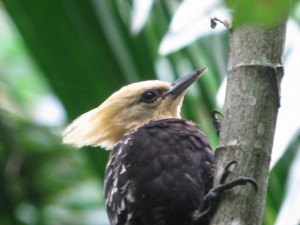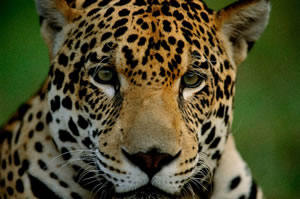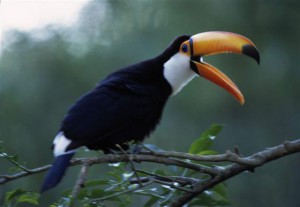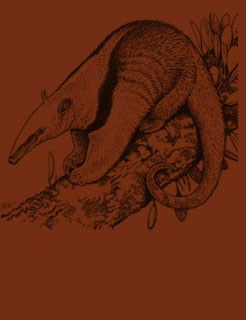4 days and 3 nights dedicated to discover the northeast jungle area of Argentina. It is a pristine place where the past melts with the present. 60 miles east from the famous Iguassu Falls at the border between Brazil and Argentina extends a large portion of subtropical rainforest protected by environmental laws.
This interesting journey is surprising for the adventurous traveller. Away from massive tourism extend beautiful landscapes characterized by rich biodiversity, lush green jungle vegetation in contrast with its red soil.
Powerful rivers and bucolic streams irrigate the forest. Clear blue sky. The curious living history of the Guarani native people, and their relation with european pioneers.
At night, the shout of an owl, the fantastic Milky Way, and the magic of the Jungle by a fireplace at the comfort of Yacutinga Lodge accommodations.


Continue reading →
Yacutinga Private Nature Reserve. A birding paradise close Iguazu Falls
Exclusive for nature lovers
 The area of the Iguazu Falls and surrounding Parks & Reserves offers important bird diversity.
The area of the Iguazu Falls and surrounding Parks & Reserves offers important bird diversity.
Located 80 kilometers East from the Iguazu Falls with an exiting bird-list of over 320-bird species identificated and registered, the exclusive Yacutinga Private Reserve and the comfort of Yacutinga Lodge guarantee a successful birding expedition.
The Iguazu Falls area belongs to the phyto-geographical area of the Parana Forest. This is one of the most bio-diverse areas in Argentina.
The main characteristics that generate this exuberant Nature are its warm climate, constant humidity, and the lack of dry seasons and changing climate.
Continue reading →
 Following the tracks of the jaguar, the “king” of the Misiones Jungle which locals insist on calling the tiger, it’s not easy. According to studies by researchers from CONICET, the province of Misiones, only has about 50 adult specimens.
Following the tracks of the jaguar, the “king” of the Misiones Jungle which locals insist on calling the tiger, it’s not easy. According to studies by researchers from CONICET, the province of Misiones, only has about 50 adult specimens.
The conservation of the forest is a matter of life or death for the jaguars that due to its strong territorial character and large size, need large spots of unspoiled nature to feed and reproduce; fragmentation and deterioration suffered by the ecosystem it inhabits, is one of the main causes that puts this species on the verge of extinction.
As a result of the disappearance of large areas of unspoiled nature, the meeting of this elusive feline in the dense forest is increasingly bizarre, we can say that it is almost impossible today to find these animals and those who have; life has given them a priceless gift.
In Misiones they only find “refuge” in the Iguassu National Park and the Urugua-í Provincial Park in the north, to the valleys of Cuñá Pirú and Yabotí Biosphere Reserve in the center of the province. Thus, the few regions that conserve the forest in good condition become true natural sanctuaries.
Continue reading →
 The highest Forest stratum, which reaches 30 meters in height, includes adult trees that form an uninterrupted roof of ramifications and dense foliage. This is the stratum that filters and administers the right amount of sunlight to the lower strata.
The highest Forest stratum, which reaches 30 meters in height, includes adult trees that form an uninterrupted roof of ramifications and dense foliage. This is the stratum that filters and administers the right amount of sunlight to the lower strata.
The smallest trees, between 3 and 10 meters high, make up to the so-called intermediate stratum. This layer is characterized by its discontinuous canopy, presence of young trees that will renew the forest, several fruit trees, bamboos and arborescent ferns.
The lowest stratum, up to 3 meters from the ground, receives little sunlight. Broad-leafed grasses, a large number of smaller ferns, and non-woody plants like begonias are abundant. This vegetal group covers and dresses the forest ground.
Continue reading →
 The location of Yacutinga Wildlife Reserve belongs to the phytogeographical area of the Parana Forest.
The location of Yacutinga Wildlife Reserve belongs to the phytogeographical area of the Parana Forest.
This is one of the most bio-diverse areas in Argentina.
The main characteristics that generate this exuberant Nature are its warm climate, constant humidity, and the lack of dry seasons and of changing climate.
These environmental conditions make the area a sort of giant greenhouse. This is a completely green, stubborn and many a times, impenetrable forest. The forest structure becomes apparent in its different plant strata, which provide more than 320 bird species listed in Yacutinga with shelter, food and reproduction sites.
Continue reading →




 The area of the Iguazu Falls and surrounding Parks & Reserves offers important bird diversity.
The area of the Iguazu Falls and surrounding Parks & Reserves offers important bird diversity. Following the tracks of the jaguar, the “king” of the Misiones Jungle which locals insist on calling the tiger, it’s not easy. According to studies by researchers from CONICET, the province of Misiones, only has about 50 adult specimens.
Following the tracks of the jaguar, the “king” of the Misiones Jungle which locals insist on calling the tiger, it’s not easy. According to studies by researchers from CONICET, the province of Misiones, only has about 50 adult specimens.
 The location of Yacutinga Wildlife Reserve belongs to the phytogeographical area of the Parana Forest.
The location of Yacutinga Wildlife Reserve belongs to the phytogeographical area of the Parana Forest.